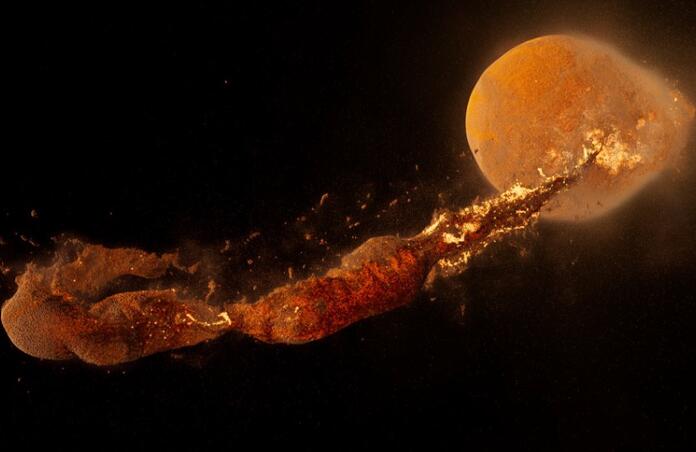New Simulations Suggest That the Moon Could’ve Formed Much Quicker Than Expected

The moon is believed to have formed as a result of a collision around 4.5 billion years ago between a young earth and Theia, a mars-sized body from the gradual cumulation of impact debris. However, new detailed simulations carried out by scientists at Durham University’s Institute for Computational Cosmology has revealed a slightly different story for the moon’s formation.
Video simulating one of the possible collisions:
The team used the most detailed supercomputer simulations yet, running hundreds of different impacts with varying angle and speed of the collision as well as the mass and spin of the colliding bodies to try and make sense of the earth-moon system we see now. Calculations were executed using SWIFT open-source simulation code, ran on the DiRAC Memory Intensive Service which is hosted by Durham University on behalf of the DiRAC High Performance Computing Facility.
Researchers found that lower resolution simulations can miss out on important features of large-scale collisions, therefore the new simulations allow for the discovery of features that were previously inaccessible. Only the high-resolution simulations ended up with the moon-like satellite along with extra detailed displaying how the outer layers were richer in materials originating from earth. This has led the team to believe in a new theory in how the moon formed from this impact. Contrary to the theory which depicts the moon growing slowly from debris around earth, if most of the moon formed straight after the impact then less would’ve become molten during formation. Depending on the details of the solidification, these two theories should predict different structures for the moon’s internal makeup. This new theory may also be able to help explain the problem plaguing scientists of the moon’s earth-like isotopic composition, where large amounts of proto-earth material has been found in the moon’s outer layers.
Co-author of study, Vincent Eke states “This formation route could help explain the similarity in isotopic composition between the lunar rocks returned by the Apollo astronauts and earth’s mantle. There may be observable consequences for the thickness of the lunar crust, which would allow us to pin down further the type of collision that took place.” In addition, the simulations uncovered that even when the satellite passed closed enough to earth to be ripped apart by tidal effects, it could actually survive and also be saved from further destruction by being pushed into a wider orbit.
These simulations have opened up many new possibilities for the starting point of the moon’s evolution, and the new rapid-forming moon theory can help to uncover clues about the predicted composition and internal structure of the satellite. Additionally, upcoming lunar missions should contribute to revealing what kind of impact formed the moon and subsequently, the history of earth.
--
Cover image: Dr Jacob Kegerreis
Video credit: Dr Jacob Kegerreis
